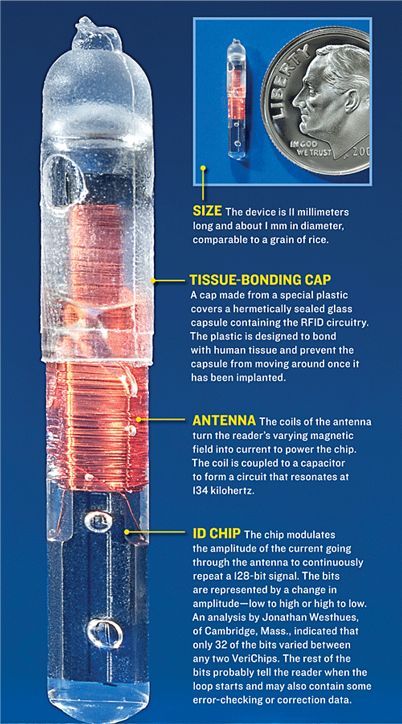Learn to separate microchipping facts from fiction!

Having a microchip implanted will hurt my pet.
FICTION:
No anesthetic is required for a microchip implant. The procedure is performed at your veterinarian’s office and is simple and similar to administering a vaccine or a routine shot.
The microchip comes preloaded in a sterile applicator and is injected under the loose skin between the shoulder blades. The process takes only a few seconds, and your pet will not react any more than he would to a vaccination.
FACT:
Pet microchips work like global positioning devices (GPS) and tell me my pet’s location.
FICTION:
Pet microchips are not tracking devices. They are radio-frequency identification (RFID) implants that provide permanent ID for your pet.
Because they use RFID technology, microchips do not require a power source like a GPS. When a microchip scanner is passed over the pet, the microchip gets enough power from the scanner to transmit the microchip's ID number. Since there’s no battery and no moving parts, there's nothing to keep charged, wear out, or replace. The microchip will last your pet's lifetime.
FACT:
My pet wears a collar with tags, so he doesn’t need a microchip.
FICTION:
All pets should wear collar tags imprinted with their name and the phone number of their owner, but only a microchip provides permanent ID that cannot fall off, be removed, or become impossible to read.
FACT:
Microchips are expensive.
FICTION:
The average cost to have a microchip implanted by a veterinarian is around $45, which is a one–time fee and often includes registration in a pet recovery database.
If your pet was adopted from a shelter or purchased from a breeder, your pet may already have a microchip. Consult your pet adoption paperwork, or have your pet scanned for a microchip at your next vet visit to reveal the unique microchip ID number and register it.
FACT:
Only dogs, not cats, need to be microchipped.
FICTION:
Both cats and dogs need to be microchipped.
Cats often do not wear collars, and may not have any other form of ID. A recent study showed that less than 2% of cats without microchips were returned home. However, if a cat is microchipped, the return-to-owner rate is 20 times higher than if the cat was not microchipped.
FACT:
My contact information is contained in the chip, and anyone with a scanner can access it.
FICTION:
Microchips carry only a unique identification number.
If your pet gets lost and is taken to a vet clinic or animal shelter, your pet will be scanned for a microchip to reveal his unique ID number. That number will be called into the pet recovery service, and you will be contacted using the contact information on file with your pet’s microchip.
**It is vital to keep your contact information up to date so that you can be reached.
FACT:
FICTION:
I need to microchip my pet more than once.
A microchip will normally last the lifetime of your pet because it is composed of biocompatible materials that will not degenerate over time.
The HomeAgain® microchip has the Bio-Bond™ patented anti–migration feature to help ensure the chip stays where it’s implanted. Also, since microchips require no power source and have no moving parts, there’s nothing that can wear out and need to be replaced. Pet owners can also check to make sure their pet’s microchip is still working by asking a vet to scan it during their pet’s next checkup.
FACT:
Having a microchip gives a pet the best protection if he gets lost.
FICTION:
A microchip is only the first step! You must register your pet’s microchip to give your pet the best protection.
Register your pet’s microchip in a national pet recovery database such as HomeAgain with your contact information, so you can be contacted when your lost pet is found. Also, remember to keep your contact information up to date whenever you move or change phone numbers.
http://public.homeagain.com/microchipping-facts.html
FACT:

Obat mata minus
ReplyDeleteSehat mata softgel
http://ow.ly/AbjX30f2TzI
http://mysp.ac/3u1Iz
http://walatrasehatmata.webs.com
Obat mata minus walatra
Pet microchips cause pets pain, illness and exploitation. Fewer than 10% of lost pets with microchips are ever recovered by their chips. Adverse events are documented at approximately 1 in 1,000 including chip failure, migration, abnormal mass and tumor formation, infection, rejection and death. Elevated levels of shelter death have been observed in association with their use. Microchip salesmen are liars. Find out more at https://ChipMeNot.info
ReplyDelete